The Physics of the Acrylic Print
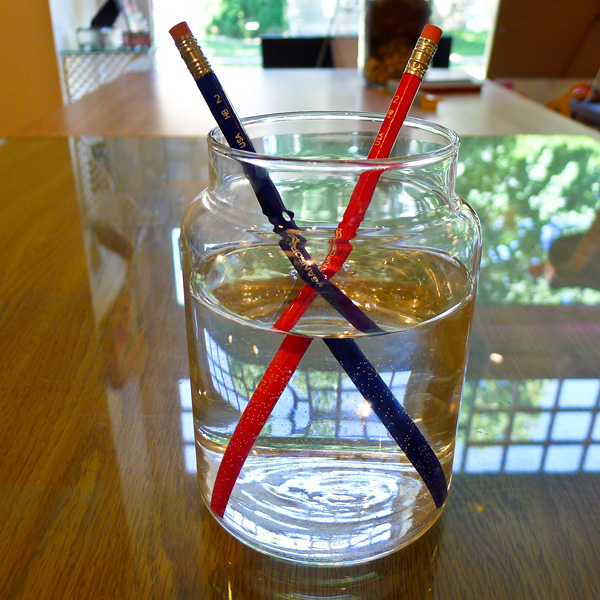
Acrylic
Prints have unique optical properties because of the
underlying physics of visible light traveling through
the acrylic layer.
A property of visible light (or white light) is that
the light waves are slightly bent as the light passes
from one medium (air) to another medium (in the above
example; water). This bending of the light is called
light refraction.
Light refraction has two impacts on the observed
image:
1) Because of the bent light, the observed object
appears slightly magnified, which gives the image
added clarity. Light refraction is the underlying
principle of optical lens technology you would find
in a camera or a microscope.
2) The bent light will also experience a slight shift
in the visible light spectrum, which adds vibrancy to
the observed colors (explained below the prism
image).
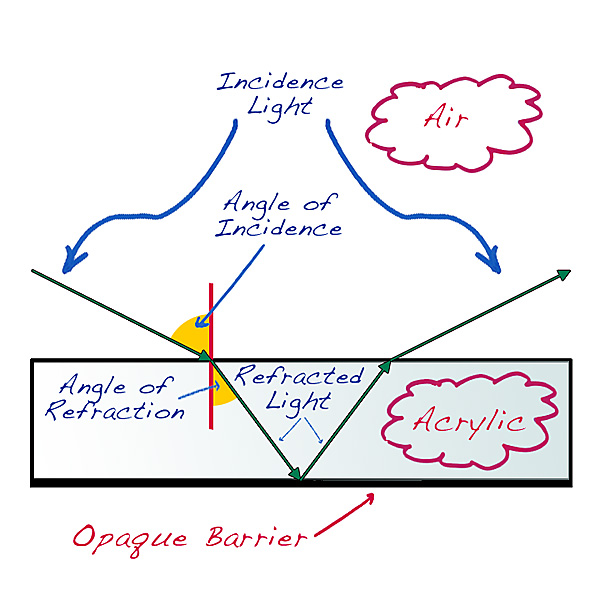
A
simplified example of what is happening with the
Acrylic Print can be see above.
Incident light (the ambient light all around us) is
slightly bent as it enterers the acrylic layer.
The altered and shortened light path continues to
travel until the opaque barrier on the backside
reflects the light back up and out the acrylic layer.
The light is bent once again and travels to the eye
of the observer.
Because the light is traveling a miniscule shorter
distance, the image has a miniscule amount of
magnification. This is why the pencils in the
water appear slightly larger.
This slight magnification provides an enhanced
clarity to the image, which is subconciously
perceptible to the human eye.
It essence, the acrylic layer is behaving like a
lens.
This example also points out the importance of the
opaque barrier. If light is allowed to 'leak' out
through the back of the print, the clarity impact is
lost because the light is not reflected back to the
eye.
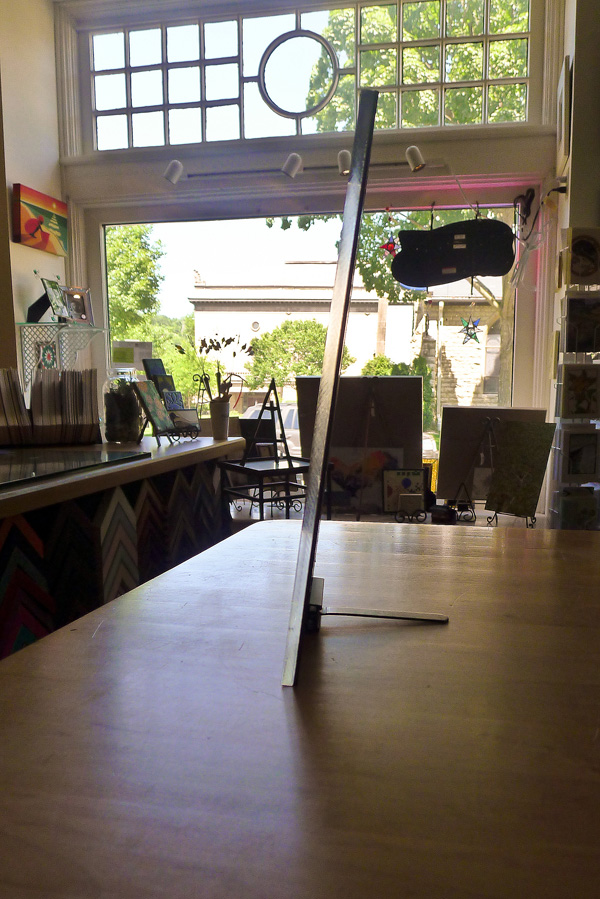
A
profile view of the Acrylic Print points out how the
construction of the Acrylic Print both traps light
within the acrylic layer and reflects light back to
the observer.
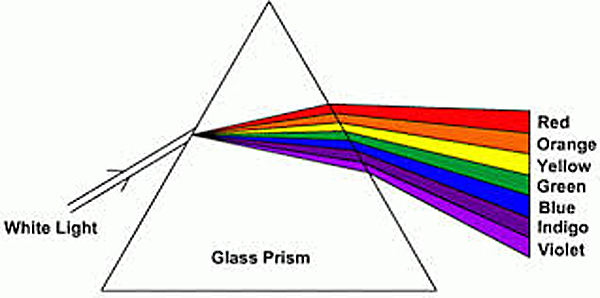
Another
consequence of bending the light is a slight shift of
the visible color spectrum.
Every
time the light is bent, the ultraviolet (UV) portion
of the light spectrum becomes slightly more dominant
and the infrared (IR) portion of the light spectrum
becomes less dominant.
IR
light has a longer wavelength than UV light and UV
light has more energy. When white light is
bent, the UV portion of the light spectrum is more
impacted.
Human
eyes are especially sensitive to the UV portion of
the white light spectrum and colors under a
UV-dominant spectrum appear to be especially vibrant.
This
is exactly why diamonds have a sense of luster. The
light is bent multiple times within the diamond and
the the spectrum shift becomes even more exaggerated
and pronounced each time it is
bent.
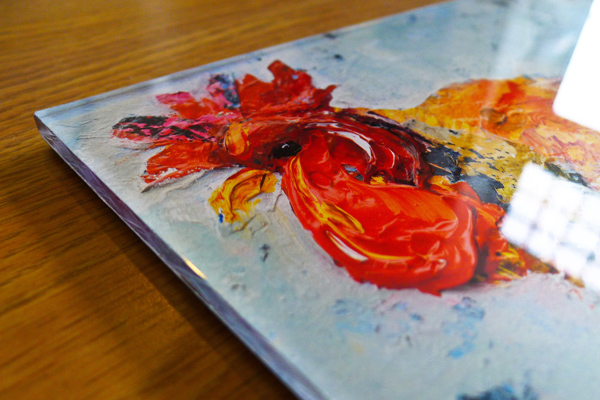
The
net result of the these two principles of light is an
Acrylic Print image that has both exceptional clarity
and luminance.
It
is really striking to see
firsthand.
Wetter than water...
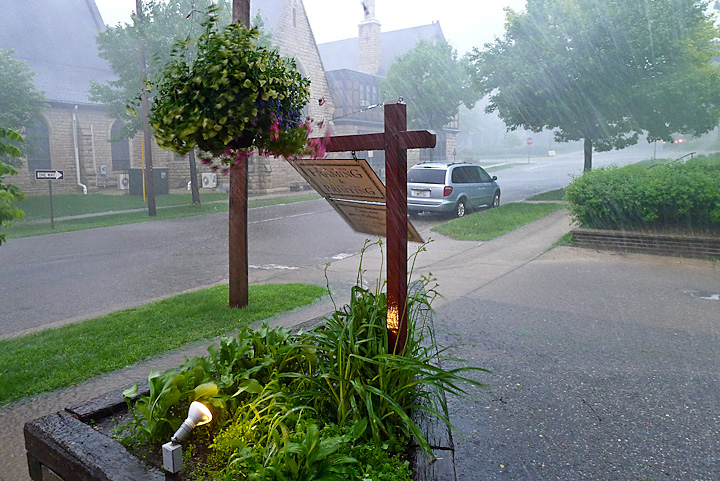
Wow. It has rained nearly every day for the past two
months.
We had a very heavy and wet snowstorm in early May
and it has been raining almost every day in June.
But this is farm country and this is the growing
season, so nobody is complaining.
1st Half of 2011...
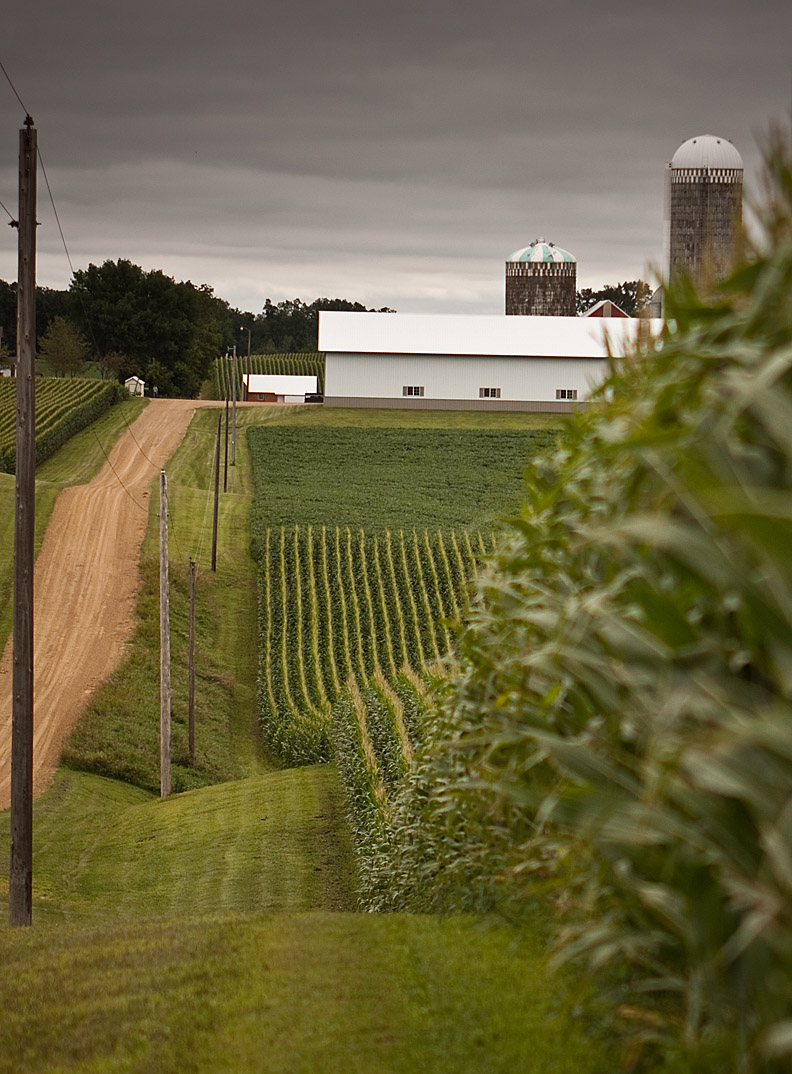
The
end of June signals the end of the first half of the
year. Last year was a good year and so far this year
is ahead of last year. The business mix has changed
over the years and we have been fortunate to be well
positioned to leverage the change.
Red
Wing Digital has been a significant time and
money investment up until this point. There are still
a few issues that need to be worked out, but the
product inventory is now in place and the details
regarding product design have been finalized. The
orders have been increasing at a nice and realistic
rate. Packaging and shipping issues are being
addressed now and we are always looking for more
production space.
This is our 10th year of business and we have been
tracking business patterns since the very beginning.
Invariable the second half is quite a bit busier than
the first half, for a number of reasons.
The bottom line is that we owe everything to our
loyal customers. Thanks again.
1st cutting...
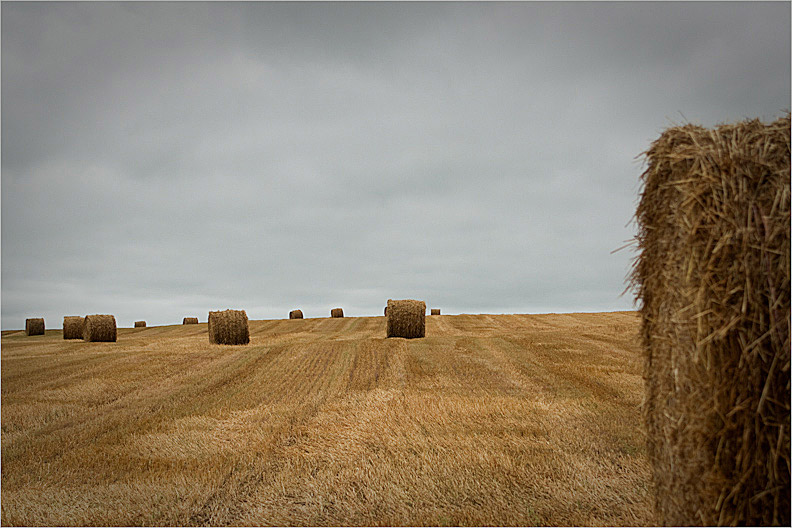
July
in Minnesota means the first hay cutting of the
season. In a normal year, most farms will have two
cuttings and then leave some winter ground cover for
the critters. The first cutting will have the most
yield, but it isn't until the second cutting that the
break-even point is reached.
For a farmer, the first hay cutting is an opportunity
to reflect on the business (year-to-date), and also
project the business going forward for the rest of
the year. Stretching this metaphor to a
near-absurdist level, it isn't that much different in
the art industry.
Business is up and the industry is cautiously
optimistic. The nature of the business has changed
and the types of projects have also changed.
Anticipating what those changes will be and
responding to those changes are some of the biggest
challenges a small business owner will face.
We will continue to evolve, but we will also continue
to provide the things we enjoy most about being in
this business.
A new web based product is under development and
should be available before the end of the year (the
evolving thing). There are also discussions taking
place regarding an original art exhibit in the
November/December timeframe (the enjoyment thing).
And of course, thank you for your patronage. Art is
good.
Better living through framing...
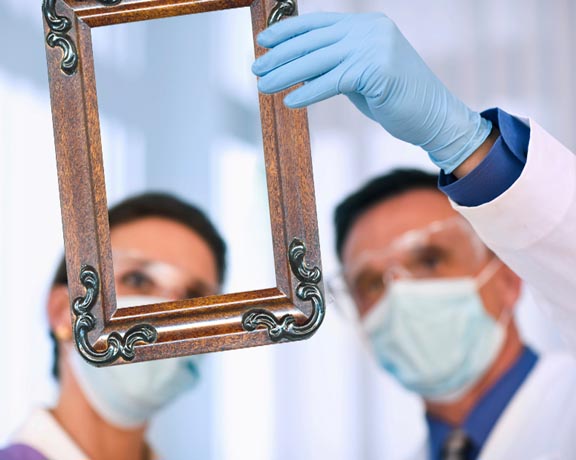
Red Wing Framing Gallery scientists
have been quietly and diligently working very hard
since the beginning of 2009 on a number of new
products. With the advent of 'digital everywhere'
technologies, customers have been insisting on using
their own images to decorate their environments in a
fashion that mirror both their lifestyle and taste.
Our challenge is to meet this expectation with
innovative and unique products.
Two products are nearing introduction. The first
product is a 'Gallery Panel' and is targeted to the
contemporary customer who wants a unique and fresh
way to present. The Gallery Panel is elegant with
old-school details, but also has a very bold and
progressive presentation. Very ebony and ivory (?).
The second product is a bit further behind in
introduction. It is code-named the 'Image Sandwich'
or I-S for short. The I-S will be a transmissive
image that will allow light from behind and lay flat
on a wall. The early prototypes are promising, but
there may be some practical size limitations that
need to be determined. I-S Version 2.0 will also be a
PDA. :)
The European marketplace tends to be more aggressive
in pushing image technology. The irony is that some
of the best ideas come from organizations in Europe
that have been in the image business since the middle
ages. We are not above learning from our European
brethren, but it is very important to be both unique
and creative.
Product announcements as they warrant and teasers are
always free and unsolicited.
And please disregard any misinformation.
The Red Wing Framing Gallery Panel Print
And now, a word from the sponsor...
For years, people have been complaining that, "if they can put a man on the moon, why can't they put a print on a panel?"
Introducing the Red Wing Framing Gallery Panel Print.
It's a Panel! It's a Print!
It's a Panel Print!
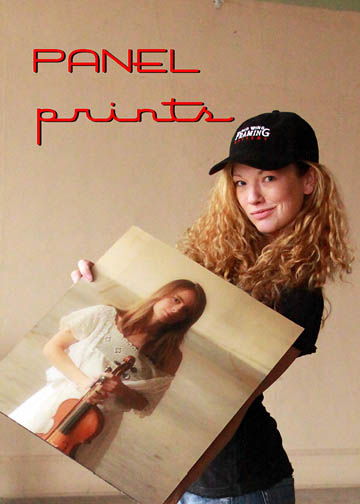
It begins with any digital photo
and ends with a full-print bleed, UV-protected, 1/4"
thick hardboard panel print that is
pool-table
flat and rugged!
The Panel Print has a linen laminate finish and a 1"
reverse frame mount. The mount lays flat on the wall
and the print is an elevated surface that creates a
modern 'drop-shadow' effect on the wall.
It can be printed at any size or aspect ratio (great
for panorama photographs) and it has been especially
popular with photographers who appreciate this very
contemporary look. It also works great for commercial
projects that are restricted from using glass or need
to cover large wall surfaces, yet still need to
project elegance and creativity.
Call the shop today at 1-651-385-0500 and create your
own art from your own images!
Now, back to the regularly scheduled programming.
